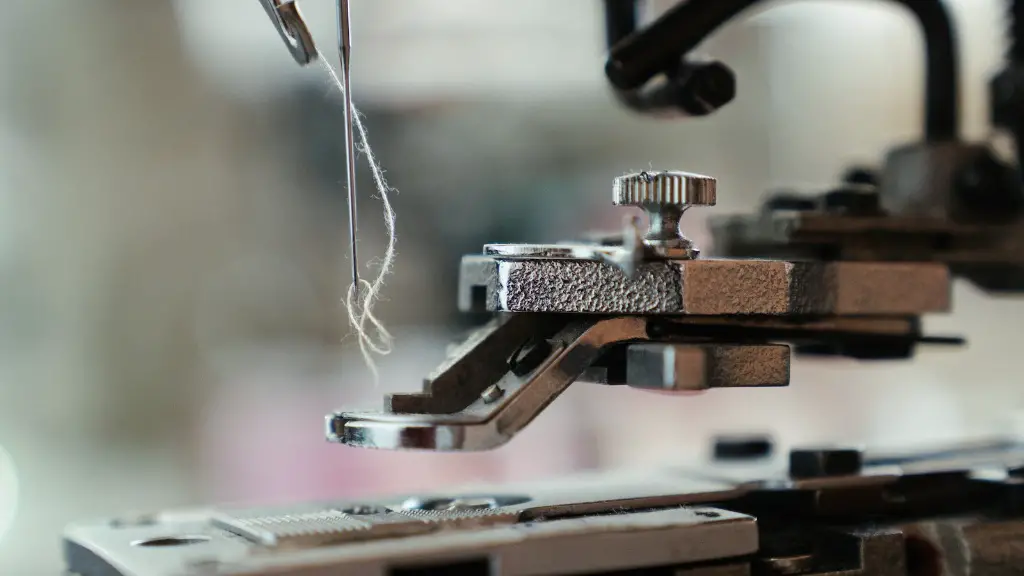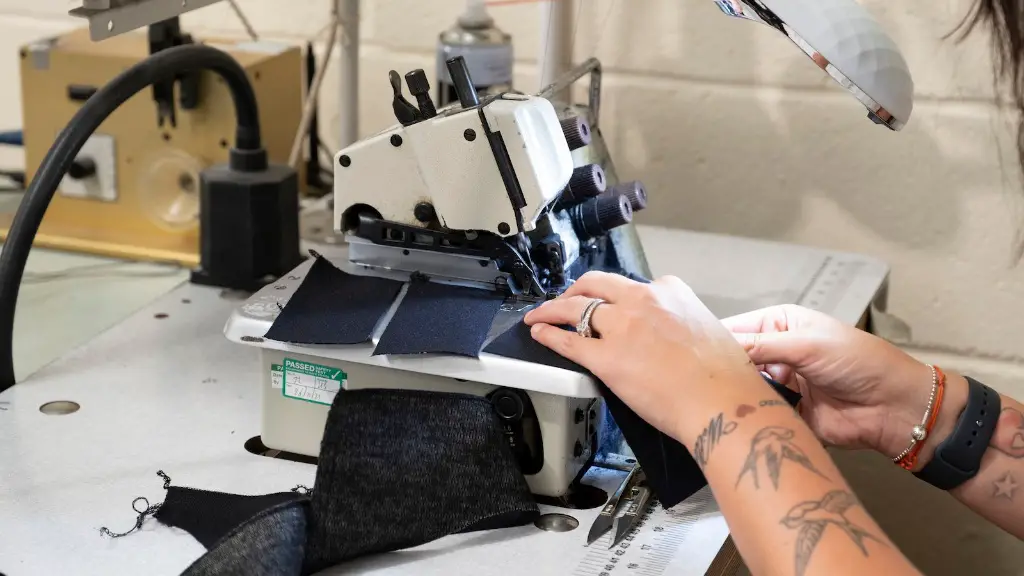A Look into the Restorative Potential of Vintage Sewing Machines
Problems with modern sewing machines are becoming increasingly well known. But what about solutions? One answer lies in the restoration of classic and antique models.
Vintage sewing machines can be found for sale or in varying conditions of disrepair. With a little work, these models can be restored to working order. Depending on the condition of the machines, the process is one of either repair or restoration.
Repairing a vintage sewing machine is relatively straightforward. Any major issues, such as broken parts or seized mechanisms, must be identified and addressed. Replacing or repairing these components is the primary task. Once this is accomplished, basic maintenance and care should be carried out.
On the other hand, restoring a vintage sewing machine is a more involved process that requires additional steps. For example, the entire machine must be disassembled and then carefully cleaned. All metal components should be oiled and other parts polished or reconditioned as needed. After taking these measures, the sewing machine can be re-assembled with new and/or restored parts.
To ensure a successful restoration, it’s important to source quality replacement parts. Many specialist shops and online vendors provide original parts and copies suitable for this type of work. Furthermore, some machines have a passionate following, leading to the availability of custom parts or instruction manuals.
Looking after a vintage sewing machine is similar to looking after any other machine. Oiling, cleaning and general maintenance are needed to keep all sewing machines in top condition.
Seeking Professional Assistance
Many vintage sewing machines require professional attention to ensure that they are working correctly. It may be necessary to source a professional repair service or restorer. As with any manual service, always ensure that the technician is experienced and qualified.
When considering a repair or restoration, it’s important to research the type of job required. Whenever possible, ask for quotes from different services to ensure a fair cost. Prices can vary considerably depending on the type of machine and the required work.
Finally, note that some people prefer to forgo the expense of repairing or restoring older machines, and instead buy new or nearly new ones. New machines may be more reliable and efficient than their vintage counterparts.
Reap Maximum Benefits from Vintage Sewing Machines
Though vintage sewing machines cost less and are simpler to use, they offer more value in the long run. Older models are often built with higher quality parts, leading to fewer issues and longer life span. Furthermore, their unique designs can be the source of creative inspiration.
With the right care and maintenance, vintage sewing machines can be just as good as their modern counterparts. As well as offering more engaging user experience, they can retain their value and prove financially savvy investment.
Moreover, these sewing machines represent a piece of history, with many restoration stories linking to various art forms and fashion movements. Seeking these artifacts can bring a sense of craftsmanship and feeling of belonging that modern reproductions can’t match.
Making the Most of Vintage Sewing Machines
Learning how to use a vintage sewing machine can open doors to different forms of creativity and artistry. If a user has a well-maintained machine, they can produce quality items such as garments, quilts and other fabric-based projects.
Using vintage machines can also be a great way to teach a younger generation about the craft and art of sewing. For those with limited equipment, older models make it easy to learn the basics of the trade at a low cost.
Many of the traditional techniques used in the past are still used today. With the proper guidance, a vintage sewing machine can be a great way to learn more about the history of sewing.
In summary, restoring a vintage sewing machine can be a rewarding experience. Not only can they help provide insight on the evolution of the craft, they can also help create unique and timeless works of art.
Unlocking New Opportunities With Restored Sewing Machines
Those with a restored vintage sewing machine can unlock numerous opportunities. The machine can be used for your own projects, for teaching, for vintage repair and for display.
One of the primary advantages of using these machines is their versatility. They can be used for a wide range of projects, from apparel to home decor to upholstery. They can also offer a unique application, given their age and specific requirements.
Another great advantage is the cost savings. Vintage sewing machines are an excellent way to save money. Parts and services for older models are often cheaper than for their modern counterparts.
In some cases, a restored vintage machine can earn you passive income. It’s perfectly feasible to start your own business with one of these wily machines, possibly benefitting from its unique appeal.
Finally, considering the number of vintage sewing machines available around the world, it makes sense to give them a shot. With the right care and restoration, these machines can be a source of creativity and inspiration, while quietly channeling the spirit of past artisans.
Unique Challenges and Pleasures of Restoring Old Sewing Machines
Restoring vintage sewing machines can pose numerous challenges. Detailed research may be necessary to identify the exact model, its specifications and potential repair parts. This can be a frustrating and expensive process.
The actual restoration process can also be difficult and time-consuming. It’s important not to rush any part of the job, as correct assembly is essential for a successful result.
Moreover, vintage sewing machines can be difficult to use and maintain. Their different mechanisms and tools create a different user experience from modern options. For those new to sewing, this can take some time to learn.
Nonetheless, restoring a vintage machine can also be a pleasurable and effective pastime. With the right care, these machines can last with minimal maintenance, proving to be surprisingly reliable in the long-run.
Indeed, vintage sewing machines can open up new opportunities for both creators of finished products, as well as for their research, repair and restoration.
Exploring the Possibilities Of Vintage Sewing Machines
Restoring a vintage sewing machine can be a very gratifying experience. It can be a rewarding way to learn more about the art of sewing, while unlocking numerous creative possibilities.
These machines can be used to produce quality garments and other handmade items, as well as to create unique works of art.
They can also be an invaluable source of creative inspiration and provide insight into the rich and varied history of the craft.
With the proper restoration and care, vintage sewing machines can serve as a working testament to the machines and techniques of the past.
Steps To Ensure Lasting Benefits From Vintage Sewing Machines
There are a few practical steps to take to reap maximum benefits from vintage sewing machines. First and foremost, always ensure that the machine is in good working condition before starting any restoration or repair tasks.
Secondly, research the required parts beforehand. This will give you a better understanding of the machine’s condition and allow you to adjust your repair or restoration plan accordingly.
Thirdly, consider allowing a professional to work on the machine. This could save you time and money in the long run and ensure that the machine is correctly restored.
Finally, confirm that all newly installed parts are correctly tightened and correctly oiled. This can help ensure that the machine operates correctly and is less likely to cause any troubles in the future.





